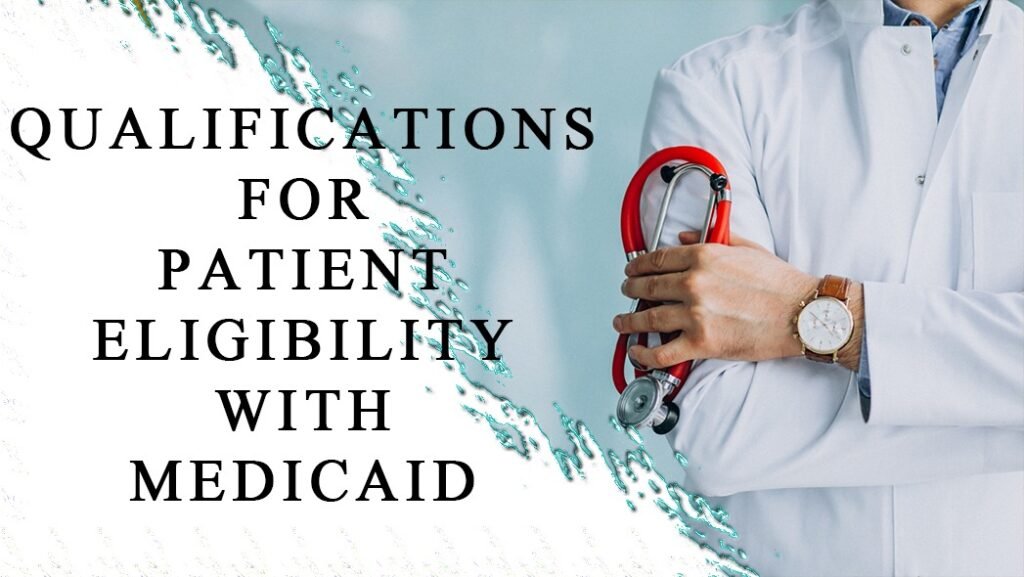Qualifications for Patient Eligibility with Medicaid
Introduction
Medicaid is a joint venture of state and federal programs whose aim is to facilitate low-income families and individuals with healthcare coverage. The patient eligibility criteria to qualify for this program is that one must be a state resident in which they receive this insurance program. The patient must be either United States resident or lawful permanent resident (non-citizen). Furthermore, some eligibility groups are limited by pregnancy, age, disability, or parenting status. In some states, Medicaid programs have expanded to cover older adults below a certain income level. Patient eligibility criteria for this program vary from state to state due to particular states’ Medicaid programs. However, specific qualification criteria for the Medicaid program are mandatory for all states to follow. The article will discuss the fundamental requirements for the eligibility of patients.
Income Eligibility
The primary criterion for qualifying a patient for the Medicaid program is income. Families and individuals must have an income below a certain threshold to qualify for this insurance program. In 2023, these limits are $14,580 for an adult person and $30,000 and $50,560 for a family comprising four and eight members, respectively. However, from state to state, income criteria vary. In some states, Medicaid programs also cover the healthcare needs of families with higher income levels. However, generally, Programs cover individuals and families with income at or below 138% of the FPL (Federal Poverty Level). However, the complexity of household income calculation is essential to consider while examining the criteria for qualifying patients for the Medicaid program. That is why there must be some additional factors that can influence the calculation of income. These factors are the size of the household and particular circumstances.
Categorical Eligibility
There are some definite eligibility requirements also mandatory for the Medicaid program. Generally, the Medicaid program is available for individual categories, including pregnant women, disabled persons, pregnant women, families, children, and old age people. Several older adults also have disabilities and could meet the categorical eligibility requirements of the program. Medicaid Program also provides healthcare facilities to patients of some eligible categories based upon their condition or disease like cancer, tuberculosis, etc. Each category has specific requirements related to age and status of disability and related factors.
Residency
Medicaid program only covers the healthcare needs of US citizens and non-citizens, covering specific immigration criteria. In most states, to become eligible for the program, applicants must be residents of the particular state. Applicants also need residency proof through utility bills and state-issued ID before applying for the program. Generally, an individual considers a state resident if they live in the state intending to live indefinitely. Federal law has prohibited the states from denying Medicaid coverage only because an individual has not been a state resident for a specified time.
Assets and Resources
Another eligibility criterion to qualify a patient for the Medicaid program is the assets limit of states. That means an individual must own limited assets like a bank savings account, investment, cash, car, and property. These resources must be less than the total value of the specified amount required to become eligible for the Medicaid program. Like the income category, resources also need standard methodologies. A definitive resource is $1000 cash for families with kids and $2000 for elderly and disabled individuals. It is $3000 specified for a couple. The Standard of Medicaid coverage is not indexed to inflation or otherwise adjusted regularly. Eventually, the resource standard of Medicaid becomes more and more restrictive over time. However, some assets, like personal belongings, are exempt from consideration.
Conclusion
Medicaid program serves as a primary source of health insurance for the entire nation, especially for people experiencing poverty. Since the last decade, some changes have been witnessed in the patient eligibility policy of the program. These changes have been made to promote Medicaid insurance program healthcare facilities coverage to older people, women, disabled, children, and low-income individuals. However, low-income people with no child adult are precluded from coverage and fall out of the program, no matter their lower income level. Nevertheless, states offer numerous options to them under Federal Law to broaden the eligibility criteria to reach the population of their uninsured low-income residents, whether pregnant women, children, elderly, disabled persons, or parents.
For further details and daily updates, please follow us on LinkedIn or join us on Quora.

